Find Help
More Items From Ergsy search
-

Cornea transplant patient Information
Relevance: 100%
-
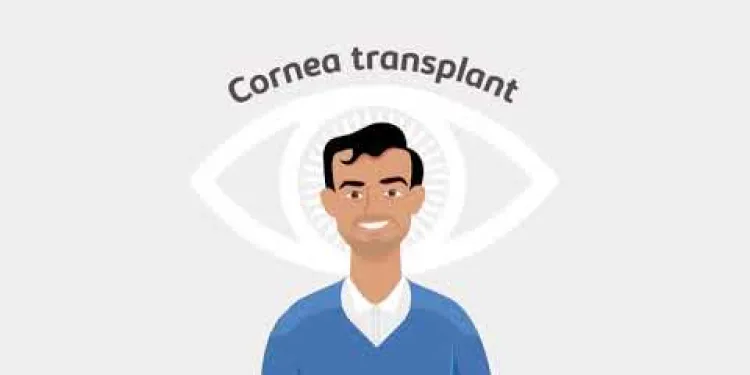
Cornea transplant - Your journey
Relevance: 75%
-
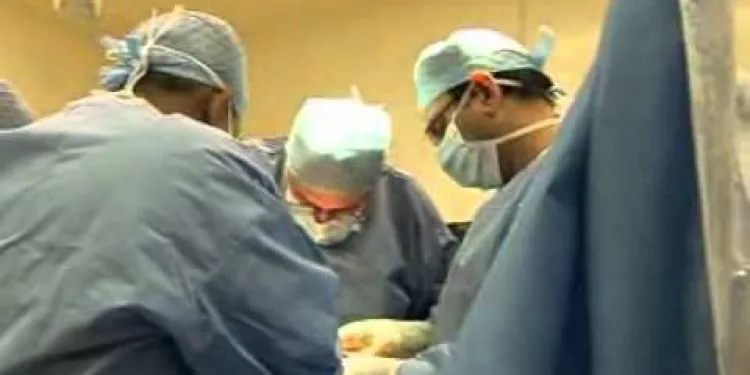
Liver transplant - Patient experience - Part 1 (Colin)
Relevance: 43%
-

Patient Stories - Having a kidney transplant
Relevance: 42%
-
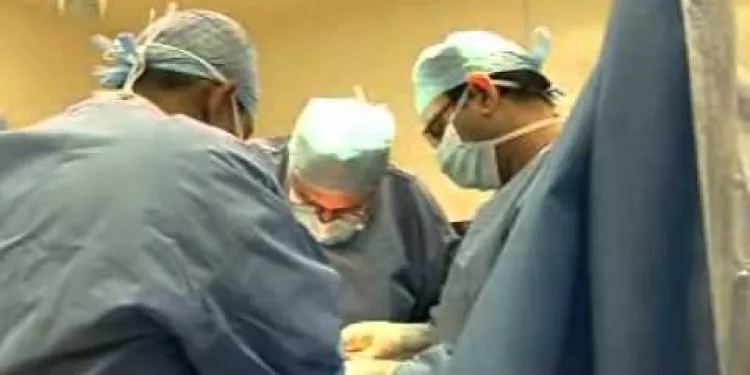
Liver transplant - Patient experience - Part 2 (Lynne)
Relevance: 41%
-

Heart-lung transplant patient shares her story
Relevance: 38%
-

Having a kidney transplant
Relevance: 35%
-

Bernard's Story - Lung Transplant
Relevance: 34%
-

Are hair transplants in Turkey safe?
Relevance: 33%
-

Hair Transplants in Turkey
Relevance: 33%
-
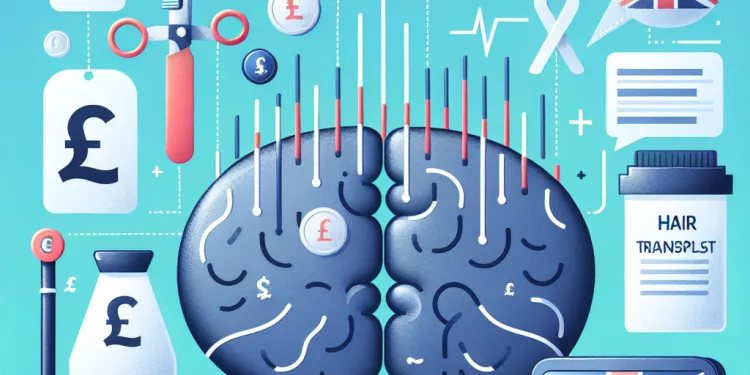
What are the risks associated with hair transplants in Turkey?
Relevance: 31%
-

What is the cost of a hair transplant in Turkey?
Relevance: 30%
-

What techniques are used for hair transplants in Turkey?
Relevance: 29%
-
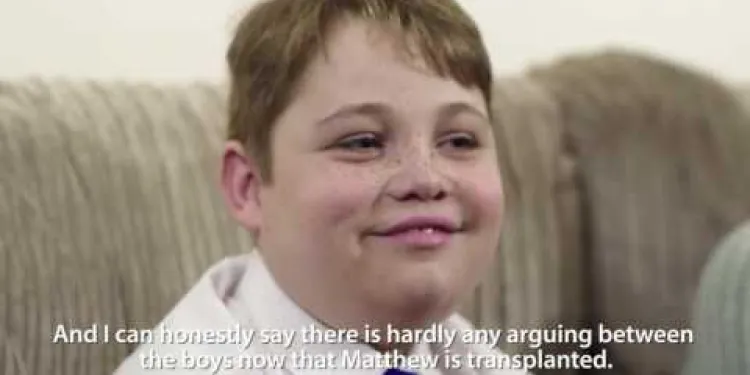
Matthew's Story: Kidney Transplant - Part 1
Relevance: 29%
-

Is language a barrier for a hair transplant in Turkey?
Relevance: 29%
-
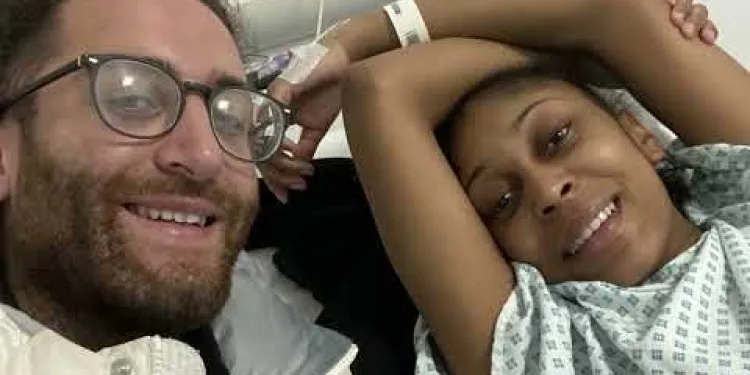
Kidney transplant waiting stories – DJ Ace and Lauren | NHS Organ Donation
Relevance: 29%
-

Will I need a follow-up visit after my hair transplant in Turkey?
Relevance: 28%
-
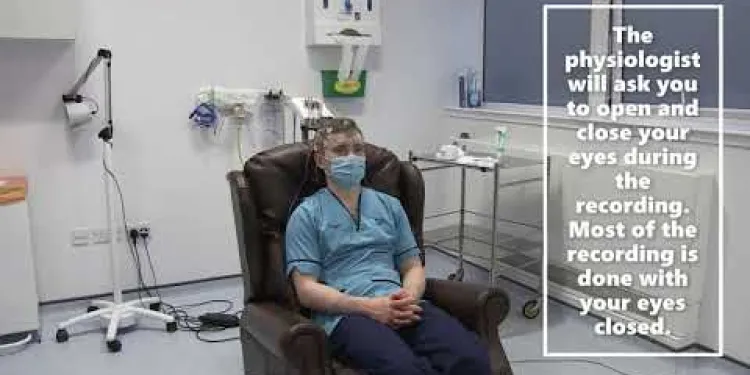
Neurophysiology EEG Patient Information
Relevance: 27%
-

How should I prepare for a hair transplant in Turkey?
Relevance: 27%
-
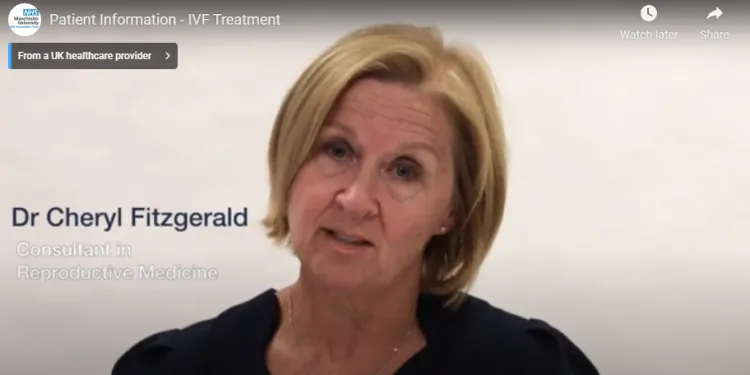
Infertility - IVF Treatment and Patient Information
Relevance: 26%
-

How long should I stay in Turkey for my hair transplant?
Relevance: 26%
-

Useful information for patients with lower back pain
Relevance: 24%
-

Useful information for patients with lower back pain
Relevance: 24%
-
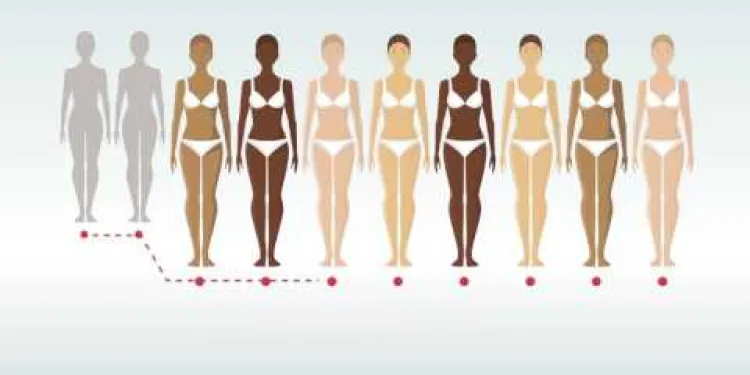
Finding out about Fibroids - information for patients
Relevance: 23%
-
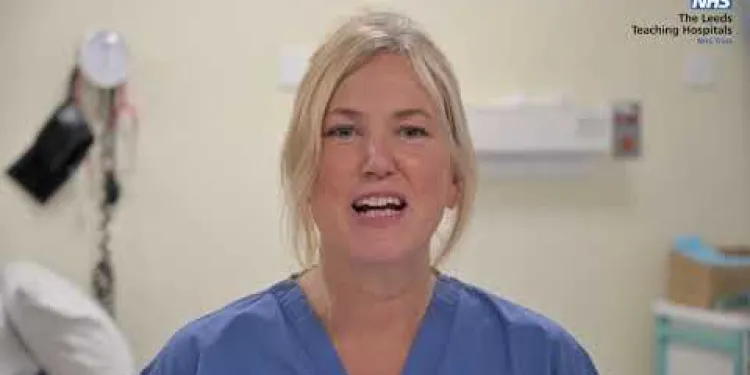
Patient Information Video - Leeds Stress Echocardiography Service
Relevance: 22%
-

Information for all cancer patients receiving Chemotherapy or Targeted Therapy at HDFT.
Relevance: 21%
-

Gaining consent from stroke patients
Relevance: 21%
-
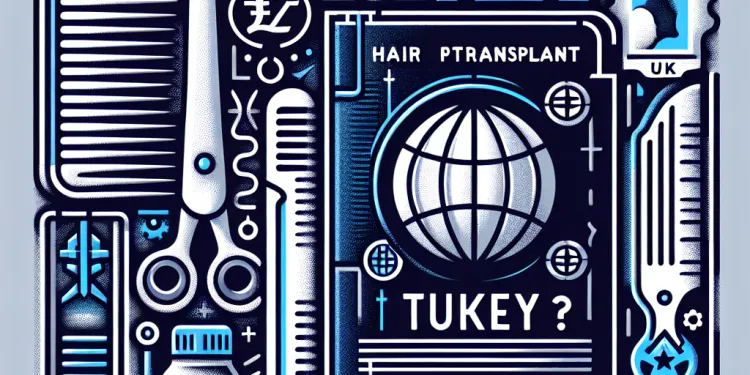
Do I need a visa for a hair transplant in Turkey?
Relevance: 21%
-

Positioning for Breathless Patient
Relevance: 20%
-

Neuroendocrine tumour patient video
Relevance: 20%
-

NHS Utilizes AI to Prioritize High-Risk Patients on Waiting Lists
Relevance: 18%
-

Assessing the stroke patient
Relevance: 18%
-

How soon can I return to work after a hair transplant in Turkey?
Relevance: 18%
-
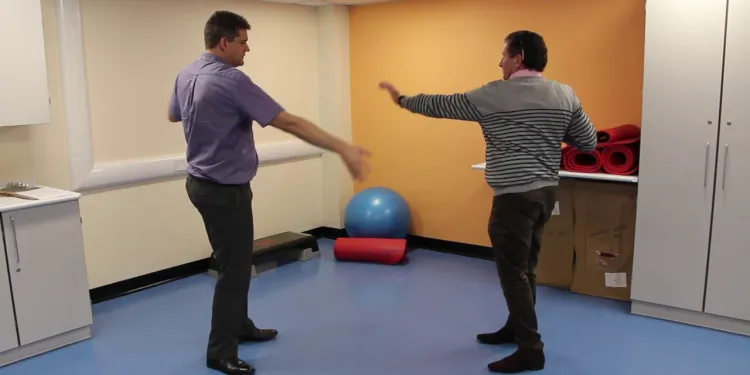
Sean's Story - There is another way. Information for prescribers
Relevance: 18%
-

Exercise in patients with a neuropathy
Relevance: 18%
-
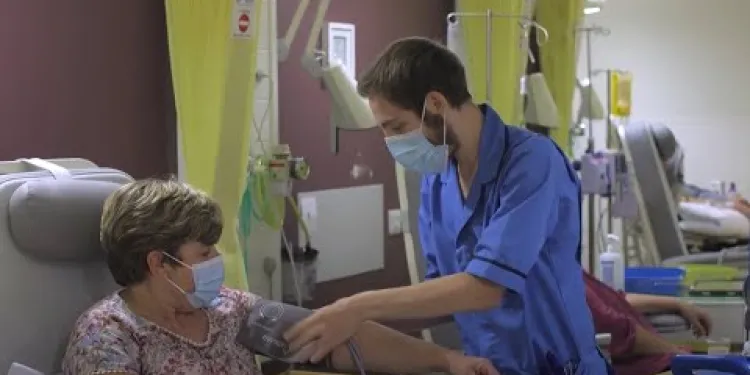
Chemotherapy - the patient journey
Relevance: 17%
-

What is self-testing for eye patients?
Relevance: 17%
-

Breakthrough Cancer Treatment Shows Promise for NHS Patients
Relevance: 17%
-

Can Baxdrostat be used in patients with renal impairment?
Relevance: 17%
-

Delirium: A Patient Story at Leicester's Hospitals
Relevance: 17%
Cornea Transplant Patient Information
Introduction to Cornea Transplant
A cornea transplant, also known as keratoplasty, is a surgical procedure where part or all of the cornea, the eye’s clear front surface, is replaced with donor corneal tissue. This surgery can restore vision, reduce pain, and improve the appearance of a damaged or diseased cornea.
Eligibility Criteria
Patients in the United Kingdom might be considered for a cornea transplant if they have severe corneal damage due to conditions like keratoconus, corneal ulcers, or dystrophies. A detailed eye examination and consultation with an ophthalmologist will determine the eligibility.
Pre-Operative Preparation
Before the surgery, patients may undergo a series of tests and assessments to ensure they are suitable candidates. In the UK, this typically involves a referral from your GP to an ophthalmology specialist, who will discuss the risks and benefits of the surgery with you.
The Surgical Procedure
The procedure is typically performed under local or general anesthesia and can take around one to two hours. The damaged corneal tissue is removed and replaced with the healthy donor tissue, which is then sutured into place. The type of keratoplasty performed can vary based on the specific condition being treated.
Post-Operative Care
After the surgery, patients will need to follow a strict regimen of eye drops to prevent infection and inflammation. Appointments for follow-up care will be scheduled to monitor healing and to mitigate any complications. Full recovery can take several months, and during this time, strenuous activities should be avoided.
Risks and Complications
While cornea transplants are generally successful, they carry certain risks such as rejection of the donor cornea, infection, and increased intraocular pressure. It’s essential to be aware of these risks and report any unusual symptoms to your healthcare provider promptly.
Conclusion
A cornea transplant can significantly improve the quality of life for patients with severe corneal damage. By thoroughly understanding the process, preparation, and aftercare, patients in the UK can better manage their expectations and contribute to a smoother recovery process.
Cornea Transplant: Patient Information for the United Kingdom
What is a Cornea Transplant?
A cornea transplant, also known as keratoplasty, is a surgical procedure to replace part or all of a damaged or diseased cornea with corneal tissue from a donor. The cornea, the clear front layer of the eye, plays a vital role in focusing vision. This procedure can significantly improve vision, reduce pain, and enhance the appearance of a damaged or diseased cornea.
Who Needs a Cornea Transplant?
Patients in the UK might require a cornea transplant if they suffer from conditions such as keratoconus, corneal scarring due to infections or injuries, corneal swelling (known as endothelial failure), or hereditary eye diseases that affect the cornea. An eye specialist will assess the necessity of a transplant based on the individual's specific condition.
Types of Cornea Transplants
There are several types of cornea transplants. The most common is penetrating keratoplasty (PK), where the entire cornea is replaced. Other types include endothelial keratoplasty (EK) and anterior lamellar keratoplasty (ALK), which replace specific layers of the cornea, offering faster recovery times.
The Procedure
The cornea transplant procedure generally involves outpatient surgery under local or general anaesthesia. The operation can take between 1 to 2 hours, during which the damaged portion of the cornea is removed and replaced with donor tissue. The new cornea is then stitched into place.
Aftercare and Recovery
Post-surgery, patients will typically be given eye drops to prevent infection and control swelling. They are advised to avoid strenuous activities and to keep water away from the eyes during showering. Regular follow-up appointments are crucial to monitor healing and detect any signs of rejection early.
Risks and Success Rate
Corneal transplants have a high success rate in the UK, with most patients experiencing significant improvement in vision. However, risks include infection, bleeding, increased intraocular pressure, and rejection of the donor tissue. Prompt medical attention is required if symptoms such as redness, pain, or vision loss occur.
Accessing Donor Tissue in the UK
In the UK, donor corneas are sourced from NHS Blood and Transplant and other tissue banks. The waiting time for corneal tissue can vary, and the availability is subject to donor supply. Transplant centres in the UK strive to match patients with suitable tissue as timely as possible.
Support Services
Numerous support services are available for cornea transplant patients in the UK. These range from patient information leaflets provided by hospitals to support groups where patients can share experiences. The Royal National Institute of Blind People (RNIB) offers resources for those adjusting to changes in vision.
Cornea Transplant Patient Information
What is a Cornea Transplant?
A cornea transplant is an operation. It fixes the front part of the eye, called the cornea. Doctors replace the damaged part of your eye with a healthy one from someone else. This can help you see better and feel less pain.
Who Can Get a Cornea Transplant?
In the UK, you might get a cornea transplant if your cornea is very damaged. This can happen because of diseases like keratoconus or ulcers. A special eye doctor will check your eyes to see if you can have the transplant.
Getting Ready for the Operation
Before the operation, doctors will do some tests. In the UK, your normal doctor will send you to an eye specialist. The specialist will tell you what you need to know about the operation and its risks.
The Operation
During the operation, you will get medicine to help you sleep or make your eye numb. It takes 1 to 2 hours. The doctor will take out the bad part of your cornea and put in a new one. They will use stitches to keep it in place. The way the doctor does the surgery can change depending on your eye's problem.
After the Operation
After the operation, you need to use special eye drops. These help stop germs and swelling. You will have follow-up visits to check your healing. It may take a few months to get better, so you should not do hard exercises until you are healed.
Possible Risks
Cornea transplants usually work well, but there can be problems. Sometimes the new cornea is not accepted by your body. There can also be germs or an increase in eye pressure. Tell your doctor if something feels wrong.
Final Thoughts
A cornea transplant can make life a lot better if your cornea is badly damaged. Knowing what happens before and after the surgery can help you be ready and have a good recovery. Following the doctor’s advice is very important.
Cornea Transplant: Information for Patients in the UK
What is a Cornea Transplant?
A cornea transplant is an operation to fix the clear layer at the front of the eye. This layer is called the cornea. If the cornea is damaged or sick, a doctor can replace it with a healthy cornea from another person. This can help you see better, feel less pain, and make the eye look normal again.
Who Needs a Cornea Transplant?
In the UK, people might need a cornea transplant if they have problems like keratoconus, scars from infections or injuries, swelling of the cornea, or if they have eye diseases that run in the family. An eye doctor will check if you need a transplant.
Types of Cornea Transplants
There are different ways to do a cornea transplant. The most common way is called penetrating keratoplasty (PK), where the whole cornea is replaced. Other ways like endothelial keratoplasty (EK) and anterior lamellar keratoplasty (ALK) replace only certain parts, helping you get better faster.
The Procedure
The transplant is done in a hospital, and you will get medicine so you don't feel pain. It takes about 1 to 2 hours. The doctor takes out the bad part of the cornea and puts in the new healthy one. The new cornea is stitched in place.
Aftercare and Recovery
After surgery, you will need to use eye drops to stop infection and swelling. It's important not to do hard activities and keep water away from your eyes. You will have to see the doctor regularly to check if everything is healing well.
Risks and Success Rate
Most cornea transplants work well, and people see much better after. But, there are risks like infection, bleeding, and the body not accepting the new cornea. If you feel redness, pain, or can't see well, it's important to see a doctor quickly.
Accessing Donor Tissue in the UK
In the UK, corneas come from donors through NHS Blood and Transplant and other tissue banks. How long you wait for a cornea can change, but they try to get a match for patients as soon as they can.
Support Services
There are many services to help people who have had a cornea transplant in the UK. Hospitals give information leaflets, and there are groups where people can talk about their experiences. The Royal National Institute of Blind People (RNIB) also gives helpful resources for those learning to cope with vision changes.
Frequently Asked Questions
What is a cornea transplant?
A cornea transplant, also known as keratoplasty, is a surgical procedure where a damaged or diseased cornea is replaced with healthy donor tissue.
Who is eligible for a cornea transplant?
Those with significantly impaired vision due to corneal damage, scarring, or disease may be eligible. A consultation with an ophthalmologist is necessary to determine candidacy.
How do I prepare for a cornea transplant?
Your doctor will provide specific instructions, which may include undergoing pre-surgery tests and avoiding certain medications. It's also important to arrange transportation for after the procedure.
What happens during the surgery?
The procedure typically takes 1-2 hours and involves removing the damaged cornea and stitching a donor cornea in its place. It is usually done under local anesthesia.
Where do donor corneas come from?
Donor corneas are sourced from individuals who have donated their organs after death and are thoroughly screened for safety.
What are the risks of a cornea transplant?
Risks include infection, rejection of the donor cornea, glaucoma, and swelling. Your ophthalmologist will discuss these risks with you before surgery.
How long does recovery take after a cornea transplant?
Initial recovery may take several weeks, but full visual recovery can take up to a year. Regular follow-up visits are necessary to monitor healing.
What restrictions are there after surgery?
Patients should avoid rubbing their eyes, heavy lifting, and strenuous activities until cleared by their doctor. Protective eyewear may also be recommended.
When can I return to work after a cornea transplant?
This depends on your occupation and recovery progress, but many patients can return to light work within a week or two, with adjustments as needed.
Will I need to take medications post-surgery?
Yes, typically you will use antibiotic and anti-inflammatory eye drops to prevent infection and aid healing. Your doctor will provide a detailed schedule.
What signs of complications should I watch for?
Watch for signs such as increasing redness, eye pain, vision changes, or sensitivity to light, and contact your doctor immediately if they occur.
Are follow-up appointments necessary?
Yes, regular follow-up visits are crucial to monitor healing, ensure the graft is functioning correctly, and to adjust medications as needed.
Can a cornea transplant fail?
While generally successful, there is a risk of graft rejection or failure. Ongoing monitoring and prompt treatment of any issues can help mitigate this risk.
Is vision assessment required before surgery?
Yes, a comprehensive eye examination is necessary to assess your vision and determine the specific needs of your cornea transplant.
How successful are cornea transplants?
Cornea transplants have a high success rate, particularly for conditions like keratoconus. Success depends on factors such as the underlying condition and patient adherence to postoperative care.
What is a cornea transplant?
A cornea transplant is an operation on the eye.
The cornea is the clear, front part of the eye that helps you see.
Doctors replace a damaged cornea with a healthy one from a donor.
This can help people see better.
To understand more, you can use pictures or videos.
It might help to talk to a doctor or someone you trust.
A cornea transplant is an eye operation. Doctors also call it keratoplasty. In this operation, a doctor takes out a bad part of the eye called the cornea and puts in a healthy one from someone else.
Who can get a cornea transplant?
If you have bad eyesight because of damage or sickness in the clear front part of your eye, you might be able to get help. You need to talk to an eye doctor to see if you can get this help.
Tools like audiobooks or large text can be really helpful for reading if you have trouble seeing well.
How do I get ready for a cornea transplant?
Your doctor will tell you what to do. You might need to do some tests before surgery. You might also need to stop taking some medicines. Make sure someone can drive you home after the surgery.
What happens during the surgery?
The doctor will do an operation. You will be in a deep sleep and won't feel anything. The doctor will fix your body inside. A nurse will help the doctor. After the surgery, you will wake up and feel better soon.
If you don't understand, you can ask someone to explain. You can also use pictures or videos to help you learn.
The surgery usually takes 1 to 2 hours. During the surgery, the bad part of the eye, called the cornea, is taken out. A new, healthy cornea from a donor is put in its place with stitches. The person having the surgery is usually awake but does not feel pain because of special medicine called local anesthesia.
If you find reading hard, try using audiobooks or reading apps. They can help make learning easier and more fun!
Where do donor eye parts come from?
When people die, they can choose to give their eye parts to help others see better.
The eye parts come from these kind people who wanted to help even after they are gone.
Doctors keep these eye parts safe until they are needed.
If you want help reading, you can ask someone, use voice tools, or look at pictures.
Donor corneas come from people who have given their eyes after they have died. These eyes are carefully checked to make sure they are safe to use.
What can happen if you get a new cornea?
There are some things that could go wrong, like getting an infection, the new eye part not working well, having high eye pressure, or the eye getting puffy. The eye doctor will talk to you about these things before they do the surgery.
How long does it take to get better after a cornea transplant?
Getting better after a cornea transplant can take time. Most people start to feel better in a few weeks. But it can take up to a year to see really well. Everyone is different.
It's important to follow the doctor's advice. Using eye drops and going to check-ups will help. Resting and wearing an eye shield can also help.
Using a calendar or reminder app is good for keeping track of medicine and appointments.
At first, healing might take a few weeks. Seeing fully better might take up to a year. It is important to go to the doctor regularly to check how the healing is going.
What can I do or not do after surgery?
Here is some simple advice for after surgery:
- Take it easy: Rest a lot and avoid doing too much.
- Ask for help: It’s okay to ask a friend or family to help you with things.
- Listen to your doctor: Follow what the doctor says about what you can and can’t do.
- Take care of yourself: Eat healthy food and drink lots of water.
- Avoid heavy work: Don’t lift or carry heavy things until the doctor says it’s okay.
If you need more help, you can ask someone to read this with you or use a text-to-speech tool.
You should not rub your eyes. Try not to lift heavy things or do hard activities until your doctor says it is okay. You might need to wear special glasses to keep your eyes safe.
When can I go back to work after a cornea transplant?
A cornea transplant is a surgery for your eye. It helps you see better.
After your surgery, take it easy and rest. Your doctor will tell you when you can work again. This might take a few weeks.
Tell your boss about your surgery. You might need to do lighter work at first.
Make sure to go to your check-up appointments so your doctor can see how your eye is healing.
If you have trouble reading, you can ask someone to read for you or use an audioplayer.
This changes based on your job and how well you are healing. But lots of people can go back to easy work in one or two weeks. You might need to make some changes to how you work.
Will I need to take medicine after surgery?
After your surgery, the doctor might give you medicine to help you feel better. This medicine can help with pain or stop infections. Make sure to ask your doctor if you have to take any medicine.
If you find reading hard, you can ask someone to read the instructions to you. Using pictures or recordings might help too.
Yes, you will usually use special eye drops to help. These stop germs and help your eyes get better. Your doctor will tell you when and how to use them.
What problem signs should I look for?
Look out for signs like red eyes, sore eyes, changes in seeing, or if bright lights hurt your eyes. If you notice these, tell your doctor right away.
Do I need to go to more doctor appointments?
Yes, it is very important to go to regular check-ups. The doctor can see how you are healing, make sure the graft is working well, and change your medicine if needed.
Can a cornea transplant not work?
Sometimes the new part might not work or your body might say "no" to it. But doctors can check to make sure everything is okay. If something goes wrong, telling your doctor quickly can help fix it.
Do you need an eye check before an operation?
If you might have surgery, it is important to check your eyes first. Doctors want to make sure your eyes are healthy. This helps the operation go well. You can use glasses or ask for help if you find reading hard.
Yes, you need to have an eye check-up. This check-up helps the doctor see how well you can see and learn what your eye needs for a cornea transplant.
How well do cornea transplants work?
A cornea transplant is an eye operation. Doctors replace a damaged cornea with a healthy one.
Many cornea transplants help people see better. But not all work perfectly. Some might not last long.
If you need help understanding this, ask a friend or use pictures and videos. They can help explain better.
Cornea transplants usually work well, especially for problems like keratoconus. How well they work can depend on the eye problem you have and how well you follow the doctor's instructions after the surgery.
Useful Links
- Ergsy carfully checks the information in the videos we provide here.
- Videos shown by Youtube after a video has completed, have NOT been reviewed by ERGSY.
- To view, click the arrow in centre of video.
- Most of the videos you find here will have subtitles and/or closed captions available.
- You may need to turn these on, and choose your preferred language.
- Go to the video you'd like to watch.
- If closed captions (CC) are available, settings will be visible on the bottom right of the video player.
- To turn on Captions, click settings .
- To turn off Captions, click settings again.
More Items From Ergsy search
-

Cornea transplant patient Information
Relevance: 100%
-

Cornea transplant - Your journey
Relevance: 75%
-

Liver transplant - Patient experience - Part 1 (Colin)
Relevance: 43%
-

Patient Stories - Having a kidney transplant
Relevance: 42%
-

Liver transplant - Patient experience - Part 2 (Lynne)
Relevance: 41%
-

Heart-lung transplant patient shares her story
Relevance: 38%
-

Having a kidney transplant
Relevance: 35%
-

Bernard's Story - Lung Transplant
Relevance: 34%
-

Are hair transplants in Turkey safe?
Relevance: 33%
-

Hair Transplants in Turkey
Relevance: 33%
-

What are the risks associated with hair transplants in Turkey?
Relevance: 31%
-

What is the cost of a hair transplant in Turkey?
Relevance: 30%
-

What techniques are used for hair transplants in Turkey?
Relevance: 29%
-

Matthew's Story: Kidney Transplant - Part 1
Relevance: 29%
-

Is language a barrier for a hair transplant in Turkey?
Relevance: 29%
-

Kidney transplant waiting stories – DJ Ace and Lauren | NHS Organ Donation
Relevance: 29%
-

Will I need a follow-up visit after my hair transplant in Turkey?
Relevance: 28%
-

Neurophysiology EEG Patient Information
Relevance: 27%
-

How should I prepare for a hair transplant in Turkey?
Relevance: 27%
-

Infertility - IVF Treatment and Patient Information
Relevance: 26%
-

How long should I stay in Turkey for my hair transplant?
Relevance: 26%
-

Useful information for patients with lower back pain
Relevance: 24%
-

Useful information for patients with lower back pain
Relevance: 24%
-

Finding out about Fibroids - information for patients
Relevance: 23%
-

Patient Information Video - Leeds Stress Echocardiography Service
Relevance: 22%
-

Information for all cancer patients receiving Chemotherapy or Targeted Therapy at HDFT.
Relevance: 21%
-

Gaining consent from stroke patients
Relevance: 21%
-

Do I need a visa for a hair transplant in Turkey?
Relevance: 21%
-

Positioning for Breathless Patient
Relevance: 20%
-

Neuroendocrine tumour patient video
Relevance: 20%
-

NHS Utilizes AI to Prioritize High-Risk Patients on Waiting Lists
Relevance: 18%
-

Assessing the stroke patient
Relevance: 18%
-

How soon can I return to work after a hair transplant in Turkey?
Relevance: 18%
-

Sean's Story - There is another way. Information for prescribers
Relevance: 18%
-

Exercise in patients with a neuropathy
Relevance: 18%
-

Chemotherapy - the patient journey
Relevance: 17%
-

What is self-testing for eye patients?
Relevance: 17%
-

Breakthrough Cancer Treatment Shows Promise for NHS Patients
Relevance: 17%
-

Can Baxdrostat be used in patients with renal impairment?
Relevance: 17%
-

Delirium: A Patient Story at Leicester's Hospitals
Relevance: 17%


